A LOT of facts, history, and stats about Google (and Alphabet)
Google (or Alphabet for the pedants) is great isn’t it? It’s probably a big reason that, for you reading this, you’re in a particular job role such as an SEO or a PPC nerd. We love statistics. We love Google. So we thought why not create something that combines the two.
From Larry Page and Sergey Brin, to Youtube, to Alphabet, to Sundar Pichai, we have tried to include as many useful statistics, facts, and tidbits about the company as we could.
This is a working document, and we will be adding more over time. Please contact us if you feel you have something to add.
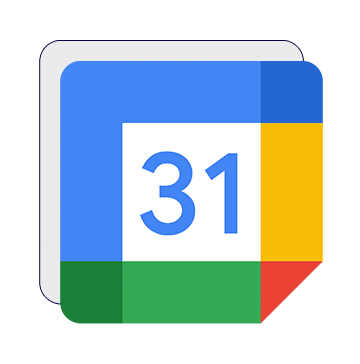
Notable Incidents in Google's History
- Google was originally named BackRub, before changing to Google in September 1997 when the domain was first registered (source).
- The company Google INC. was officially founded on September 4th 1998 by Larry Page and Sergey Brin (source).
- The first Google Doodle appeared in August 1998, to let people know Larry and Sergey were out of the office for the Burning Man Festival (source).
- Since then, the brand has grown in stature and launched several other subsidiaries, including Google AdWords in 2000 (source).
- In July 2001, Google Image Search was launched alongside Google’s regular search offering (source).
- By the end of 2021, over one billion URLs have been stored on Google (source).
- Google News was established in 2002 as a beta version (source).
- Klingon was adopted as a language variant in 2002 (source).
- In 2004, Gmail was launched, which is now one of the most popular email platforms on the planet (source).
- 2004 was a big year for Google, as it was the year the company first became a public trading company on NASDAQ (source).
- Another popular Google platform called Google Maps was released in 2005 (source).
- In 2006, Google acquired the video streaming service YouTube for a hefty $1.65 billion (source).
- In 2007, Google innovated once again, introducing Google Street View to the world (source).
- September 2008 is a busy month for the company, with both Google Chrome and Android OS being released (source).
- Voice Search was officially introduced on Android in 2009 (source).
- One of the world’s first tablets was delivered by Google in 2010, known as the Nexus One (source).
- Google’s new foray into the social networking world occurred in 2011 with Google+ (source).
- In 2011, Google registered more than a billion unique users for the first time (source).
- In 2015, Google was restructured into a new holding company known as Alphabet Inc (source).
- The first generation of the Google Pixel was released in 2016, breaking new ground within the world of smartphones (source).
- Google’s AI chatbot program, BARD is introduced in 2023 (source).
- In September 2023, Google celebrated its 25th anniversary (source).
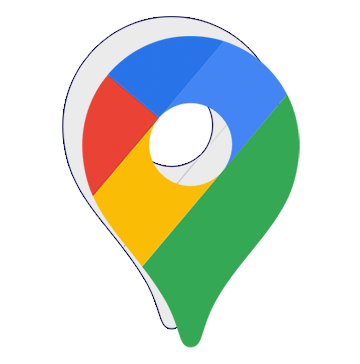
Facts about Google Maps
- Google Maps boasts 1 billion active users worldwide monthly, including on Apple and Android devices. (source)
- Google Maps dominates across all mobile phone manufacturers, with 10 billion downloads from the Google Play Store. (source)
- Google Maps provides navigation in 220 different countries and territories (source).
- As of 2019, Trekker operations and the Street View car had combined to collect 170 billion images from 87 countries (source).
- More than 25 million businesses are listed on Google Maps (source).
- Business owners and users contribute more than 20 million pieces of information daily, constantly maintaining the app’s modernity. (source)
- Estimations suggest that Google Maps alone made $11.1 billion for its parent company in 2023 (source).
- By suggesting that users take a more eco-friendly driving route, it is estimated that Google Maps has contributed to preventing approximately 1.2 million metric tons of carbon emissions from being released into the atmosphere. (source)
- Over 1 billion km are driven daily across the globe through Google Maps (source)
- Google Maps can communicate in 50 different languages, serving millions of different users across the globe (source)

Products that Google has Killed off (1998-2019)
- In total, Google has killed 296 notable services/products since 2006. (source)
- Google Answers, an online knowledge market where users could pay researchers to find answers was killed in 2006 after being available for 4 years. (source)
- Google Web Accelerator was killed in 2008 after being available for 2-3 years. The client-side service was designed to speed up the loading time of web pages by around 2 seconds. (source)
- Google Audio Ads was shut down after just 7 months in 2009. This allowed advertisers in the US to run audio ads on AM/FM radio stations in the US, all through the Adwords interface. More modern iterations have become available through YouTube and other audio interfaces in recent years. (source)
- Grand Central was a VOIP service that was acquired by Google in 2005 and killed in 2009 when Google Voice was launched. (source)
- Real Estate in Google Maps was launched in 2009 and killed in 2011. It allowed users to find properties for sale/rent directly in Google Maps. (source)
- Google Real-Time Search launched in 2009 and allowed users to retrieve real-time results from Facebook, Twitter, and participating news websites. The service was killed in 2011. (source)
- Google Directory was an internet website directly that allowed users to users to explore websites that were sorted into 14 categories. This was killed in 2011. (source)
- Google Labs, the experimental technology arm of Google which was used to showcase new products, was killed in 2011, which resulted in the closure of many products/services around this time. (source)
- Google Desktop was a tool which allowed users to search local files including emails, photos, music, files, and webpage history. Google killed the tool in 2011. (source)
- Google PowerMeter debuted around the same time as smart meters but before energy providers started installing them as standard. It allowed users to track energy usage in their homes. After two years, it was killed in 2011 after consumer uptake didn’t meet expectations. (source)
- Google Notebook was a tool which allowed you to clip information from websites when conducting research. It was just over 3 years old when Google decided to kill it in 2011. (source)
- Urchin, the first iteration of what users will know now as Google Analytics, was killed in 2012 following the launch of Universal Analytics, a much more comprehensive tool for tracking website visitor information. (source)
- Google Video was a free video hosting platform which allowed users to embed videos on other websites. After 7 years it was killed in 2012 so Google could focus solely on YouTube which it had acquired 3 years earlier. (source)
- Less than a year after acquiring Sparrow, an email client designed for iOS and OS X, in 2012 Google killed the product entirely. (source)
- Google SMS was a service which allowed users to text basic questions and request updates on weather and sport. After 8 years in 2013, Google killed the service as the world transitioned over to smartphones. (source)
- Google Talk was 7 years old when it was killed by Google in 2013. Better remembered by the name GChat, it allowed users to communicate via instant messages and by voice. (source)
- One of the more controversial closures in recent memory is Google Reader, an RSS/Atom feed aggregator widely used to collate updates from user-preferred sources across the web. Killed in 2013, it had been active for over 7 years. (source)
- iGoogle was a start page for the internet which allowed users to create a personalised web portal or Google Homepage. Killed in 2013, Google reasoned that the need for it had declined. (source)
- Google Checkout was killed in 2013. It was designed as a payment processor to make paying for online purchases more accessible to users. (source)
- Google Questions and Answers was a free-to-access knowledge market similar to Quora. It was killed in 2014 after 7 years and around the same time as the launch of the answer box in search results. (source)
- The recently resurrected Google TV was initially killed in 2013 when Google launched Chromecast. In recent years the Chromecast has been discontinued and replaced with a new version of Google TV. (source)
- The Google Glass Explorer Edition was an optical device worn by users which had a head-up display to allow users to interact with the world around them using natural language. After two years, Google killed the product in 2015. (source)
- Google Code, a software development platform which had revision controls, a wiki for code, and also issue trackers, was killed by Google in 2015 after usage declined. It had been live for nearly 11 years. (source)
- Google Compare was only live for a year before Google decided to kill it in 2016. The service allowed users to compare financial products including insurance, mortgages, and credit cards. (source)
- Google Now was a card-based user interface which predicted what users wanted to see and displayed that information as updates to them in Chrome or the Google App on Android and iOS devices. Google killed it after 4 years in 2016. (source)
- As the usage of Adobe Flash was being superseded by HTML5, Google launched a product called Google Swiffy which allowed users to convert SWF files to HTML5. It was killed in 2016 as the need for the product had declined considerably. (source)
- Google Nexus was Google’s original lineup of smartphones that launched in 2010 and later included tablets running a stock version of Android. After six years, Google discontinued the range in favour of Google Pixels. (source)
- Build with Chrome was a partnership between Google and Lego which was live for around 3 years before being killed in 2017. It allowed users to build and share Lego creations on digital plots of land within Google Maps. (source)
- Google Map Maker was killed in 2017 after 4 years as most of the features to create your own map overlays were integrated directly into Google Maps. (source)
- YouTube Video Editor was available for 7 years before Google killed it in 2017. It was a web-based video editor which allowed users to edit, merge, and add special effects to videos. It was replaced around a year later with YouTube Studio Editor. (source)
- Save to Google was an extension that allowed users to save a page link with tags similar to Pocket or Instapaper. Live for 6 years, it was killed by Google in 2018. (source)
- After just 2 years, Google killed its Google News and Weather App in 2018 which acted as a news aggregator on Android and iOS devices. (source)
- Google Nearby Notifications served as a proximity marketing tool and used users’ real-time location data to serve content to Android devices. It was active for 3 years before being killed by Google in 2018. (source)
- Chromecast audio was a piece of hardware that allowed users to cast media to any device with an audio input. Initially launched in 2015, it was discontinued 3 years later in 2018. (source)
- Google Allo was another foray into instant messaging by Google but low user takeup meant that 3 years after launch, Google killed the service in 2019. (source)
- Another closure which disappointed users was Google’s URL Shortener service. Also known as goo.gl, after 9 years, Google killed the service in 2019, citing changes in the way users discovered content online. Existing links will be depreciated in August 2025. (source)
- Google+ was Google’s attempt to brand into social media, but it failed to get users on board and after 8 years of trying, Google eventually killed the service in 2019. (source)
- Inbox by Gmail was an alternative email app that approached how users could manage emails differently from a standard email client. A small but passionate user base was disappointed when Google discontinued the app in 2019. (source)
- Data Saver Extension for Chrome was killed in 2019 after being active for 5 years. The extension routed Chrome traffic through Google’s servers to help compress webpages and reduce the bandwidth required to load pages. (source)
- Google Trips was a standalone app which allowed users to plan trips. After most of the features were rolled into Maps and Search natively, Google killed the app in 2019. (source)
- The Works With Nest API was killed in 2019. The service allowed third-party developers to integrate with Nest devices and control them through third-party apps. (source)
- Another victim of Google’s attempts at instant messaging, YouTube Messages, was killed in 2019. The explained the reason for shutting down was to focus on public conversation. (source)
- Google Daydream was the second foray into the VR industry by Google. Baked into Android 7.1 and later, combining phones that met specific specifications and a headset for the user, Google decided to discontinue it in 2019. (source)
- After deciding that they could provide a better experience in a progressive web app format, Google killed the Adsense app for iOS and Android in 2019. (source)
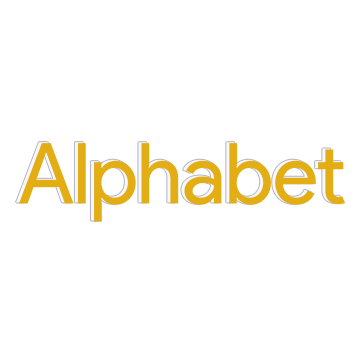
Statistics about Alphabet, Google's holding company
- Alphabet was created in 2015 as part of a restructure, becoming Google's holding company
- In 2016, Alphabet had revenues of $90b, increasing every year after, with 2023's revenues being $307b
- In February of 2016 Alphabet overtook Apple to become the world's most valuable company - for two days - until Apple took back over
- In 2020 Alphabet become only the fourth US company to reach over $1 trillion in market value
- Even the pandemic affected the mighty Alphabet, when the company recorded its weakest quarterly growth for almost ten years, in October 2022
- Alphabet fluctuates between being the first and second-highest spenders on research and development in the world - in 2022, R&D spend was just under $40b
- In April 2024, for the very first time, Alphabet went over the $2 trillion mark in terms of market value (source)
- In the third quarter of 2024, Alphabet recorded just over $26b in net income (see chart below)
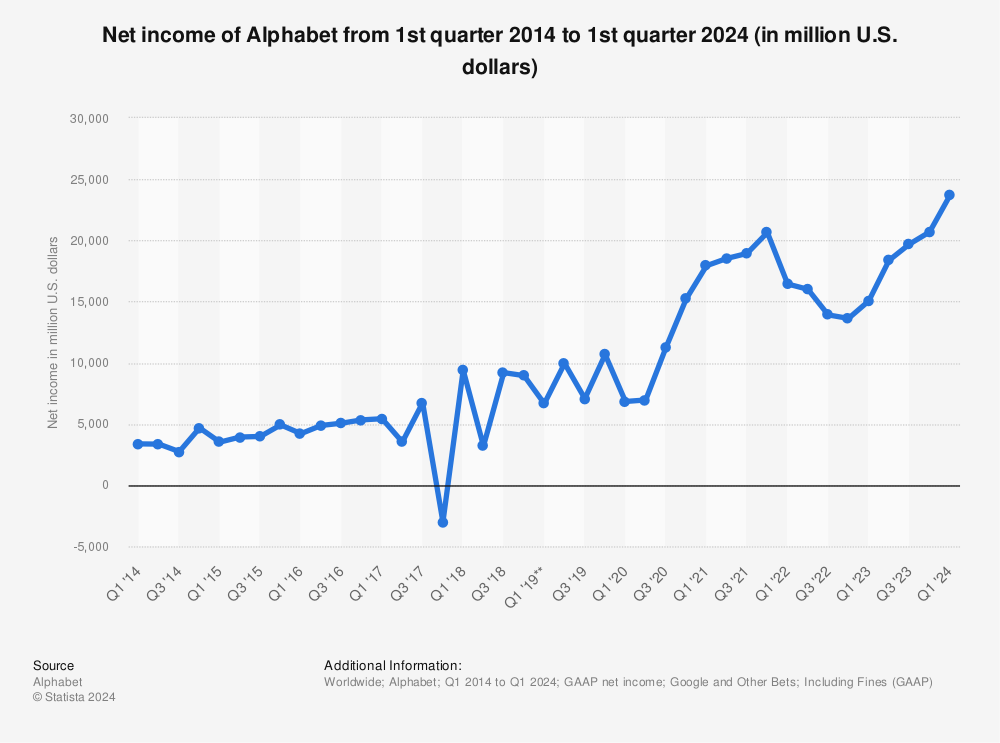

Stats about Alphabet / Google's Finances
- Google's annual revenue in 2022 was $278 billion - a rise of over 8% from 2021. (source)
- In 2023, Google achieved its highest ever annual revenue at over $305 billion.
- In 2021, Google spent the most of any company in the world on R&D - $27 billion.
- The vast majority of Google's revenue still comes from Google Ads in 2023. 77.8%. (source)
- 'Cloud' infrastructure and services make up around 12% of Google's revenue in 2024. (source)
- Google controls around 8% of the cloud service market, with growth happening every year.
- Google has spent over 7% more in R&D in 2024 than it did in 2023, indicating that it understand that diversification is very important to its future.
- In 2022, it was predicted that the 'GOOG' stock price would dip in 2024, but instead, 2024 saw a lot of growth, with highs of over $191. Growth continued all through 2023 after poor results at the tail end of 2022. (source)
- With Google Search seeing desktop market share reaching its lowest point in 10 years (81.9% in 2024), it is expected that revenues will become much more diversified for the company in 2025 and beyond.
- In 2023, Google had over $100 billion in cash reserves.
- Google stock has brought an average annual return of over 20% since its IPO in 2004.
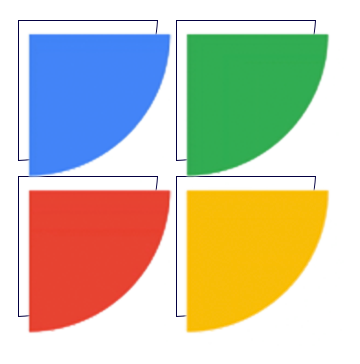
GFiber (Google Fiber) Statistics
- The location with the fastest Google Fiber speeds is Salt Lake City in Utah. Speeds have reached over 859 Mbps.
- The average latency on Google Fiber Internet speed tests is 19.08ms.
- 239.4 Mbps - the average download rate for Google Fiber (source)
- First Introduced in 2012, with the first location being Kansas City, Kansas. The area was chosen from over 1,100 applicants to be the first Google Fiber community.
- Expanded to Austin (TX) and Provo (UT) in 2013.
- Rebranded to GFiber in October 2023.
- Google created an April Fool's joke around the product in 2012 by announcing that Google Fiber was an edible energy bar.
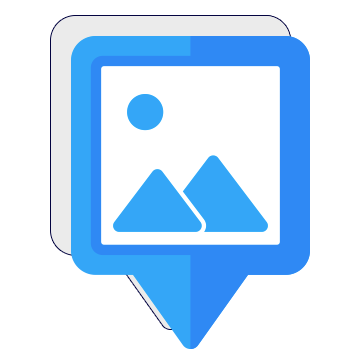
5 Google Images Stats
- Around 1 billion people use Google images daily. (source)
- Google search stats show that 10.1% of Google traffic is for images (source)
- The most searched Google image is the moon landing image ‘One small step’ (source)
- 19% of Google SERPs show images (source)
- There are an estimated 136 billion indexed images on Google Image search (source)
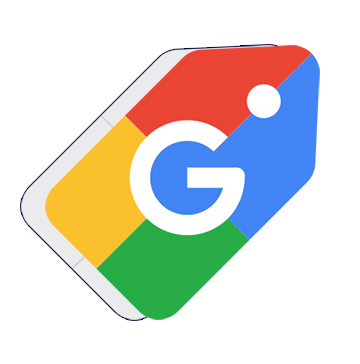
Google Shopping Statistics
- Google Shopping sees approximately 1.2 billion monthly searches. (source)
- 83% of consumers state that being able to make returns easily is important to them, so this is worth considering when setting up Google Merchant Center (source)
- 49% of consumers use Google to discover new products (source)
- On average, Google Shopping ads cost $0.66 each time someone clicks on them. (source)
- Around 60% of shopping-related queries on Google are upper-funnel. (source)
- Google Shopping Ads account for around 85% of all clicks on Google Ads and Shopping campaigns combined. (source)
- Over 5 million companies are actively using Google Merchant Center. (source)
- Ads on Google Shopping drive around 76% of search ad spend for the eCommerce sector. (source)
- On average, 1.91% of Google shoppers make purchases after visiting a product page. (source)
- Conversion value for Shopping ads is approximately 28% higher than when compared to text ads. (source)
- Searches on Google account for approximately 36% of product discovering. Using Shopping listings to your advantage can help your products feature high on the SERP. (source)
- Google Shopping clicks are growing by 17.7% every year. (source)
- When compared to text ads, Shopping ads are 85% more likely to drive traffic to a website. (source)
- On average, eCommerce brands usually allocate 80% of their PPC ad spend to Shopping campaigns. (source)
- 76% of retail search ad spending is derived from Google Shopping campaigns. (source)
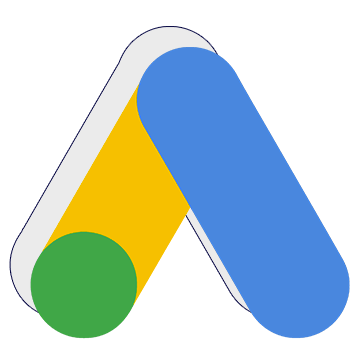
Statistics about Google Ads
- On a global scale, 80% of businesses use Google Ads (source)
- 63% of users have clicked on a Google ad (source)
- On a daily basis, around 61% of smartphone users engage in Google search (source)
- In 2023, Google Ads generated an overall revenue figure of $237.855 billion (source)
- Google has a market share of 93.5%, in the UK alone (source)
- The average CTR (click through rate) for Google Ads is between 4 and 6% (source)
- 65% of users click on a paid ad when making a purchase (source)
- The average CVR (conversion rate) on paid search ads is between 3 and 6% (source)
- On Google Ads, the average CPC (cost per click) is between £0.75 to £1.50 - this will vary industry to industry (source)
- Personalising ads could boost sales by 30% (source)
- The average ROI is 200% on Google Ads (source)
- Out of all internet users, 90% see a Google ad (source)
- 52% of users feel that they aren’t being culturally represented in ads (source)
- Local advertising is becoming even more crucial, with 97% of users going to the internet to find local businesses (as of 2022) (source)
- For B2B, the estimated traffic through paid search is 12% (source)
- The dating industry has the highest CVR for search ads, at 9.64% (source)
- Around 45% of smaller businesses have a paid search marketing strategy (source)
- 96% of brands spend some of their marketing budget on Google Ads (source)
- For commercial- intent keywords, ads receive 65% of clicks compared to 35% for organic results (source)
- Taking a closer look at online users, 58% of millennials said that they made an online purchase because of an online ad (source)

All about Eric Schmidt
- Eric Schmidt was the CEO of Google from 2001 to 2011. He went on to become their Executive Chairman from 2011 to 2015. (source)
- When Schmidt was hired at Google, his salary was $250,000 as well as an annual performance bonus. (source)
- Schmidt left Alphabet (Google’s parent company) in June of 2019 after a tenure of 18 years. He did stay as a Technical Advisor for another 8 months, leaving in February 2020. (source)
- In 1983, Eric Schmidt worked as the first Software Manager at Sun Microsystems. (source)
- Before working at Google, Schmidt became Novell's third CEO and Chairman in April of 1997. He worked there until 2001. (source)
- Schmidt became a billionaire (in US dollars) based on stock options received as an employee of a corporation. He was neither the founder nor a relative of a founder of these companies. (source)
- In August 2010, at the “Techonomy” conference, Schmidt spoke about the misuse of technology by people with bad intentions, saying the only way to manage challenges is with much greater transparency and no anonymity. (source)
- In July 2024, Schmidt said at an event at Stanford University that Google’s AI struggles are due to the rise of employees remote working. (source)
- Since he departed from Google, Schmidt has become an authority figure on AI, regularly posting his views on LinkedIn and being a spokesperson for AI’s place in the world. (source)
- In 2024, Schmidt said he believed that in the next 5 years, AI systems will be able to write and improve on their own code. (source)
- During Schmidt’s time at Google, he massively scaled its infrastructure and product offerings. Many new products and services were introduced including: Google News (2002), Blogger (2003), Google Books (2004), Gmail (2004), Google Earth (2005) and Google Maps (2005). (source)
- In 2024, Schmidt and his wife co-founded a nonprofit organisation called Schmidt Sciences. The goal of this organisation was to advance science and technology that deepens human understanding of the natural world and solutions to global problems. (source)
- Eric Schmidt’s net worth in November 2024 was $24.8B, making him the 81st richest person in the world. (source)
- Eric Schmidt was a member of President Barack Obama’s Council of Advisors on Science and Technology in 2009. (source)
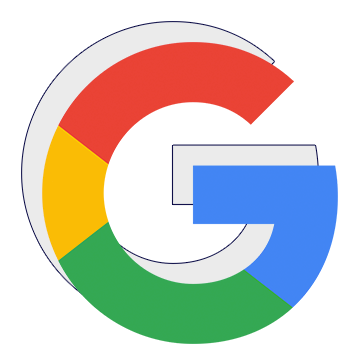
Did you know?
A 'googol' is written as 10,000,000,000,000,000,000,000,000,000,000,000,000,000,000,000,000,000,000,000,000,000,000,000,000,000,000,000,000,000,000,000,000,000!
Sergey Brin and Larry Page used a misspelling of 'googol' to name their new venture, and the rest is history.

6 Stats about Google Books
-
- In 2024, Google Books now contains over 40 million books in 500 languages. (source)
- Using the Elphel camera, Google Books can scan and make digital 1,000 pages of text per hour. (source)
- As of 2024, Google Books is now available in 75 countries and can be accessed by over 3 billion people. (source)
- It took 8 years for Google Books to scan 20 million books, after which time the scanning process slowed down considerably. (source)
- The Google Books app has now been installed on more than 1 billion devices worldwide and comes preinstalled on all Android devices. (source)
- In 2017, Google physically moved 90,000 books from Jerusalem to Germany to have them digitised from ancient Hebrew. (source)

Interesting Facts About Google Meet
- Google Meet has over 300 million active users per month, Microsoft Teams has over 145 million (source)
- Google Meet video calls don’t provide official figures, but estimates suggests it used around 50-100mb of data per hour for audio calls only (source)
- Google meet is optimised for low-bandwidth mobile networks through WebRTC and QUIC over UDP (Source)
- Google Meet has the best advantage of video conferencing tools as many people use Google have existing accounts (source)
- Google Meet adheres to the standards set by the IETF security for datagram and transport layer security (DTLS) and Secure real time transport protocol (SRTP) (source)
- Top Countries for Google Meet are United States, India and Italy (source)
- Google Meet daily active users in the UK as of May 2020 had 60,000 daily users (source)

All about Sundar Pichai (Google CEO)
- Sundar Pichai’s real name is Pichai Sundararajan, and he was born on the 10th June in 1972 (source)
- He became the CEO of Google on the 10th of August, 2015 after previously being Chief Product Officer. He then became the Alphabet CEO in 2019 (source)
- He was rumored to have been considered for the role of CEO of Microsoft in 2014, prior to this prestigious job going to Satya Nadella (source)
- It only took 11 years for him to work his way from leading product management for the Chrome Toolbar all the way to the very top job (source)
- He was heavily involved in the development of the Chrome browser, released in 2008, which resolved a core issue at Google which was that Internet Explorer was the browser installed by default on most computers (source)
- Sundar Pichai’s base salary at Google is reported to be around $2 million USD per year. Taking into account his various stock options and bonuses, this has been calculated that they could reach up to $280 million USD per year, depending on stock performance (source)
- Sundar Pichai net worth in 2024 is estimated to be around $1,68 billion USD. This vast wealth has been gathered by his salary, various investments but, most significantly by his stock holdings in Alphabet, Google’s parent company (source)
- In 2022 he was reportedly one of the highest paid CEO’s in the world, with an estimated $226 million USD earned (source)
- Pichai’s leadership style is said to be “inclusive and transformative”. It is said that he “emphasizes collaboration and open communication, encouraging employees to share ideas freely” (source) It thus makes sense that when people describe his personality they say he is a very empathetic and thoughtful man with an even temper (source)
- Sundar Pichai has an undergraduate degree from the Indian Institute of Technology Kharagpur in “metallurgy engineering” which, according to topuniversities.com “involves investigation of the chemical and physical properties of metallic elements, compounds and alloys.” (source)
- He then went on to complete his Masters at Stanford University in material sciences and engineering (source). This was reportedly on a scholarship (source)
- Sundar Pichai doesn’t have a PHD, despite wishes from his parents that he would continue his studies after Stanford. (source)
- Before he started his career at Google, he had jobs at Applied Materials and McKinsey & Company (source)
- The products that Pichai has overseen in his career at Google include Google Search, Maps, Play, Android, Chrome, Gmail, Google Workspace, and Chromebook (source).
- He is a huge advocate of AI and has announced that over a quarter of the new code generated at Google is now created using AI (source)
- Pichai has a wife and two children. His wifes name is Anjali Pichai (née Haryani) and they met when studying at the Indian Institute of Technology (IIT), in Kharagpur, India (source)
- Sundar Pichai has a son named Kiran Pichai who was born in 2005 (source), and a daughter called Kavya (source) In 2015 he said he would always be home to put his children in bed (source)
- Pichai and his family live in an mansion in Los Altos Hills in California (source). The house is worth a whopping $40 million USD and sits at a huge 31.17 acres (source)
- Pichai’s car collection reportedly includes two Mercedes (V Class and the S650) as well as a BMW 730 LD (source)
- Pichai has an amazing memory for numbers, and can apparently remember every phone number he has ever dialled (source)
- He is a big cricket fan, often sharing Cricket news on his X (formerly known as Twitter) account (source)
- He is a vegetarian, and takes a lot of care for his personal health and fitness (source)

Statistics about Adsense
- Almost 58.5 million active websites globally are using Google AdSense (source).
- Google Adsense holds a share of 41.76% among the top 10,000 websites currently using publish ad server technologies. (source).
- Over 2 million publishers earn money using Adsense (source).
- A total of 489,596 websites using Google AdSense use WordPress, which is the most popular content management system used by website owners. (source).
- Google Adsense is used by some of the most high-traffic websites in the world including Buzzfeed, BBC, Fox News and NY Times (source).
- AdSense pays around £6.00 per 1,000 page views in the UK, based on earnings of £0.15 from 25 views. (source).
- To generate earnings, AdSense estimates are based on websites with at least 50,000 monthly visitors (source).
- The average cost per click (CPC) for display ads on AdSense is approximately £1.90 (source).
- Publishers earn 68% of the revenue generated by the ads hosted on their sites through Google AdSense (source).
- The click-through rate for Google AdSense usually ranges between 1% and 10% (source).
- Google pays approximately $10 billion annually to AdSense publishers (source).
- You must earn at least $100 (£60) before getting paid on AdSense, with thresholds varying by currency (source).
- The US is the leading country using AdSense with 430,200 websites (source).
- Google states that for every $1 a business spends on Google Ads, it generates $8 in profit through Google Search and Ads (source).
- AdSense has 19 standard sensitive ad categories across 17 countries (source).
- Top industries using Google AdSense include:
- Computers, Electronics & Technology: 7.67%
- Arts & Entertainment: 5.77%
- Games: 4.42%
- News & Media: 3.23%
- Others: 78.91% (source).

Products that Google has killed off (2020-)
- After deciding that they could provide a better experience in a progressive web app format, Google killed the Adsense app for iOS and Android in 2019. (source)
- Playground AR, otherwise known as AR Stickers, was a feature designed for Pixel phones that allowed users to drop virtual characters and objects into real spaces using the camera. If you followed tech news, you’ll have likely seen the launch pack of Star Wars stickers being shared before the service was killed in 2020. (source)
- Discontinued in 2021, Google Home Max was a large stereo speaker with a built-in subwoofer and ‘Smart Sound’ machine learning. (source)
- Google Cardboard was Google’s first launch into VR using phones as the primary devices inserted into a cardboard headset. It was discontinued after 6 years in 2021. Despite being discontinued, Google still shares how you can make your own cardboard headset at home. (source)
- Starting as ‘Google Express’, the Google Shopping Mobile App was a standalone app which provided users with a personalised shopping feed. It was discontinued after the service was moved into the Shopping tab on Search. (source)
- The Google Measure app allowed users to measure objects in the real world using AR technology. It was discontinued in 2021 after poor ratings on the Play Store detailed it wasn’t working as well as third-party alternatives. (source)
- Google Play Movies & TV was discontinued in 2021 after the ability to buy/rent movies and TV was moved into the YouTube app. It was originally called Google TV which is unrelated to the new Google TV platform. Despite the original shutdown date being 2021, the service was still available for some users long after. (source)
- Shortly after acquiring Fitbit for over $2billion, Google killed the Fitbit Coach app which used AI to to create personalised workouts for users. (source)
- Despite being live for 16 years, Google Bookmarks never really took off as a service and Google eventually killed it in September 2021. (source)
- Google Toolbar was killed in 2021 after being actively developed for 21 years. The toolbar served as a way for users to access Google Search and services in other browsers including Internet Explorer and Firefox. (source)
- In 2022 Google shutdown Android Things which was an operating system designed to be run on Internet of Things products. (source)
- Prior to being discontinued in 2022, G Suite Free was a reduced set of workplace apps which allowed businesses to use a Workspace style environment free of charge. Users were transitioned to paid plans on Google Workspace. (source)
- Android Auto for phones was an app that allowed users to use their phones to display the Android Auto system that had been designed for car screens. It was discontinued in 2022. (source)
- Available for over 11 years before being shut down in 2022, Google Chrome Apps allowed users to run web applications directly in the browser. (source)
- Google Surveys was a business product designed to allow businesses to conduct market research. After 10 years, it was shut down in 2022. (source)
- Google Hangouts is another casualty of the attempts from Google to launch an instant messaging app. It lasted longer at just over 10 years but was eventually discontinued in 2022 as users were migrated to Google Chat. (source)
- As a part of YouTube Red (later YouTube Premium), YouTube Originals was Google’s attempt to compete in the TV/Movie streaming market with original content. It was shut down in 2022 after 6 years. (source)
- Another controversial killing was Google Stadia, Google’s game streaming platform. It worked well, perhaps a little ahead of its time, but user uptake was low and after 3 years, Google shut it down completely in 2023 after Google had issued refunds for all purchased content. (source)
- As Google worked to compete with social media platforms, it hopped on the stories trend and launched YouTube stories. These were short-form videos which expired after 7 days. They discontinued the feature in 2023. (source)
- Google Optimize was shut down in 2023 after 11 years of allowing website owners to measure and test different variations of web pages. (source)
- Launched in 2014, Google Domains acted as a domain registrar service. In 2023 Google exited the market after selling the service to Squarespace. (source)
- Before its demise in 2024, Google Podcasts was a standalone app that allowed users to subscribe and listen to podcasts. The functionality was moved into the YouTube Music app. (source)
- Part of the Google One product, the VPN feature was discontinued in 2024 with Google citing that low usage and a want to focus on more in-demand features were the reasons. (source)
- After over a decade of success and over 100,000,000 devices sold, Google discontinued the Chromecast line and replaced it with the new Google TV streamer which has chromecast functionality and is prepped to support more demanding requirements of streaming today. (source)
- At the time of writing, we have one more Google killing for 2024, and that’s the Jamboard, an interactive physical and digital whiteboard designed for education and workspace customers as a collaborative tool. (source)

Larry Page Mini Biography
- Larry Page is one of the co-founders of Google, alongside Sergey Brin. (source)
- Page was born on 26th March 1973 in Michigan, US. (source)
- Page’s father was a Computer Science professor at Michigan State University. (source)
- In 1995 he gained a computer engineering degree from the University of Michigan. (source)
- He then moved on to Standford University and entered the doctoral program, which is where he met Brin. (source)
- Together, they worked from his dorm room to create a new type of algorithm for search engines - named PageRank. (source)
- In order to help advance their search engine, the pair raised USD1 million from investors, friends, and family. (source)
- In 2004, Page and Brin received the Macaroni Prize for the algorithm. (source)
- In September 1998, the pair founded Google Inc., with Page as CEO. (source)
- He was in this role for three years, until he moved into President of Products in April 2001. (source)
- The CEO role was replaced by Eric Schmidt, until Page took up the position again from April 2011 - October 2015. (source)
- In August 2015 Google announced it was having a restructuring under a brand new umbrella company called Alphabet, with Page serving as Alphabet’s CEO. (source)
- In December 2019, Alphabet shared that Page and Brin would be stepping down from their roles but continue to serve on the board of directors. (source)
- As of November 2024, Page is thought to have a net worth of USD163 billion. (source)
- Page was an angel investor in Kittyhawk - a flying car company. (source)
- Page is also an investor in Tesla Motors as he is an advocate for promoting the adoption of renewable energy. (source)
- In May 2013, Page revealed on his Google+ profile that his right vocal cord is paralysed. His left cord was paralysed in 1999. (source)

Stats about Google Workspace
- Google Workspace has over 3 billion active users worldwide (source).
- Google Apps owns over 50% of the market share in its category (source).
- Nearly 15 million websites are utilising Google Workspace (source).
- Approximately 6 million websites in the U.S. rely on Google Workspace (source).
- Google Drive boasts a user base of over 2 billion (source).
- Google Apps holds just over 50% of the market share, with Microsoft Office 365 trailing behind at roughly 45% (source).
- Google Drive has more than 2 billion active monthly users across the globe (source).
- Over 900 million people use Google Sheets every month (source).
- Between 2019 and 2020, Google Workspace saw a 20% increase in its user base, making it the most popular productivity tool (source).
- 92% of Google Workspace users claim they have made real-time collaboration their team's standard in the workplace (source).
- 50% of Google Workspace users strongly agree that providing feedback on documents is easy, compared to 38% of Microsoft users (source).
- As of January 2024, Google Workspace surpassed 8 billion paying customers (source).
- Google Workspace dominates the global market, holding the largest share worldwide, except in Japan, where it holds 63% of the market share (source).
- Over the last two years, the user base of Google Workspace has grown by 80%, due to its increased adoption by businesses worldwide (source).
- Google Calendar manages over 1.5 billion events daily (source).
- Google Workspace is the leading software in the webmail space, with the biggest market share across businesses and individual users (source).
- In the education sector, Google Workspace's user base has grown by 30% (source).
- Over 200,000 healthcare providers utilise the tool, and the adoption of Google Workspace in this industry has grown by 50% (source).
- Each week, approximately 1,800 new companies join Google Workspace (source).
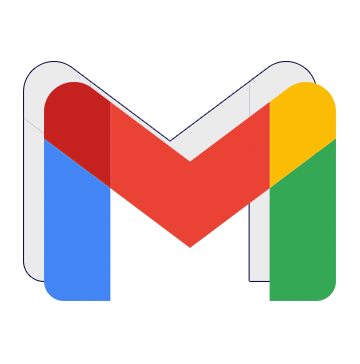
Gmail Statistics
- Gmail is the most used and popular email service provider, with over 1.8 billion users. (source)
- The average Gmail account has over 17,000 messages. (source)
- Gmail was launched was launched on April 1, 2004, by the founder of Google, Paul Buchheit. (source)
- Gmail is now part of Google Workspace, the integrated solution that spans Docs, Slides, Sheets, Meet, Chat, and more—and that’s home to more than 3 billion global users. (source)
- On any given day, Google Workspace now prevents more than 100 million harmful emails from reaching Gmail users. (source)
- During the first part of the pandemic, Google launched the ability to start or join a video call directly from Gmail. (source)
- Gmail became the first mobile app on Google Play store to hit 1 billion installations on Android devices (source)
- In 2022, gmail reached 10 billion downloads, the fourth Google app to surpass this number, after Google Play, Google Maps and YouTube. (source)
- The largest demographic of users are aged 25 - 34 and make up 28.34%. (source)
- The top traffic source to gmail.com is Direct traffic, driving 60.36% of desktop visits in October 2024. (source)
- Gmail owns 30.68% of the email market share, second to Apple. (source)
- On Thursday 8th August 2024, gmail experience service degradation for a duration of 4 hours and 10 minutes which stopped users being able to send emails with attachments. (source)
- During COVID-19, Gmail blocked more than 240 million daily spam messages associated with the pandemic. (source)
- Gmail is the largest email provider in the UK, holding 38% of the total market share. (source)
- Your gmail account has two email addresses, gmail.com and googlemail.com, both email addresses are classed as the same. (source)